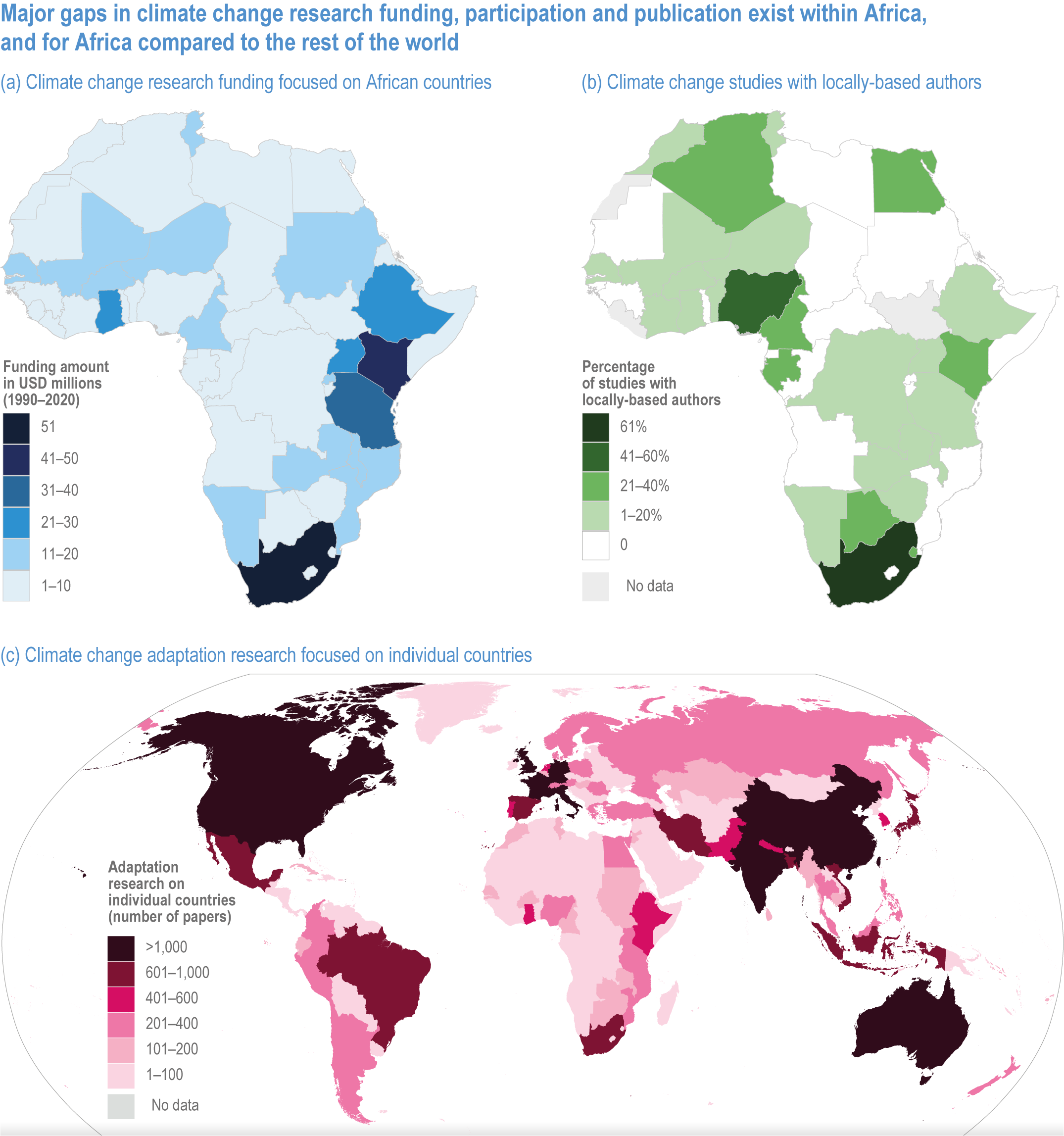Figure 9.5
Figure caption
Figure 9.5 | Observed climate change impacts on human and natural systems are widespread across Africa, as are climate trends attributable to human-induced climate change. This machine-learning-assisted evidence map shows the presence of historical trends in temperature and precipitation attributable to human-induced climate change (pinks compared to greys) and the amount of evidence (shown by intensity of colours) documenting the impacts of these climate trends on human and natural systems (e.g., ecosystems, agriculture, health) across Africa. ‘Robust’ indicates more than five studies documented impacts per grid cell. A ‘High’ amount of evidence indicates more than 20 studies documented impacts for a grid cell. Climate impact studies from the literature were identified and categorised using machine learning. A language representation model was trained on a set of 2373 climate impact studies coded by hand. This supervised machine learning model identified 102,160 published studies predicted to be relevant for climate impacts globally; references to places in Africa were found in 5081 studies (5% of global studies). Temperature trends were calculated from 1951–2018 and precipitation from 1951–2016. Attribution of climate trends to human induced climate change is limited in some regions of Africa due to insufficient data (see Section 9.5.1, Figure 9.15). Hatching shows regions where trends in both temperature and precipitation are attributable to human-induced climate change. Data from Callaghan et al. (2021).
